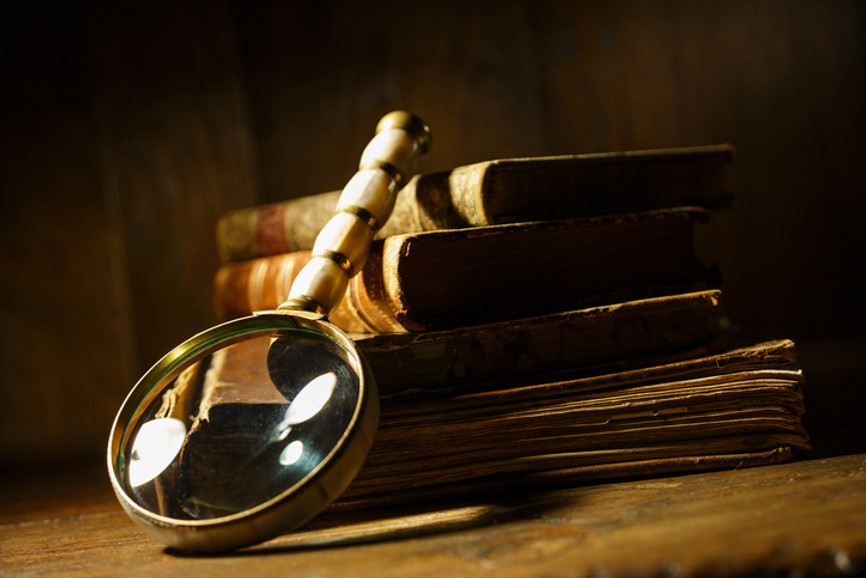
Historical Treasures: Finding Inspiration from Historical Events and Figures
Nov 12th 2025
History is a vast tapestry of triumphs, tragedies, and turning points that offer endless inspiration for storytelling. Whether you’re writing a novel, screenplay, or short story, historical events and figures provide rich material to craft compelling narratives, explore universal themes, and reimagine the past.
Here’s how to mine history for inspiration and breathe new life into the tales of yesteryear.
1. Reimagine Historical Figures
Historical figures often feel larger than life, but behind every famous name is a complex human being with fears, dreams, and flaws.
- Focus on the Untold: Instead of retelling well-known events, explore lesser-known aspects of a historical figure’s life. What did they think, feel, or struggle with behind the scenes?
- Add a Twist: Reimagine their story with a “what if” scenario. What if Joan of Arc survived her trial? What if Nikola Tesla succeeded in creating unlimited free energy?
This approach allows you to explore alternative realities while staying rooted in history.
2. Spotlight Unsung Heroes
History is filled with ordinary people who achieved extraordinary things but never made it into the textbooks. These overlooked individuals often have fascinating stories.
- Research local history, small communities, or niche fields.
- Look for the individuals who played supporting roles in major events, such as a nurse during a historic war or a scientist whose contributions were overshadowed.
Telling the stories of unsung heroes brings fresh perspectives to historical narratives.
3. Explore Forgotten Events
Not every historical event is a world war or a revolution. Smaller events—local protests, lost expeditions, or forgotten treaties—can serve as the foundation for unique stories.
- Dive into historical archives, old newspapers, or local history museums to uncover hidden gems.
- Ask yourself: Why did this event fade from memory? What impact did it have on the people involved?
These lesser-known moments can provide a fresh lens for exploring universal themes.
4. Use History as a Backdrop
Sometimes, history serves best as the setting for a fictional story. Placing your characters in a specific historical period can add richness and depth to your narrative.
- A romance blossoming during the Renaissance.
- A mystery unfolding in a bustling 1920s speakeasy.
- A coming-of-age tale set in the shadow of the Civil Rights Movement.
Immerse yourself in the details of the era—clothing, language, technology, and social norms—to make the setting feel authentic.
5. Ask “What If?”
Alternate history allows you to reimagine pivotal moments and explore the ripple effects of different outcomes.
- What if the Roman Empire never fell?
- What if the printing press had been invented a century earlier?
- What if a famous assassination attempt had failed?
By blending historical fact with speculative fiction, you can create thought-provoking and innovative stories.
6. Focus on Relationships and Emotions
History isn’t just about dates and events—it’s about people and their experiences. Look for the human side of history.
- What would it feel like to be a soldier at D-Day?
- How would a family cope with life during the Great Depression?
- What was the emotional toll on the people behind the scenes of major revolutions or breakthroughs?
These intimate perspectives make historical stories relatable and emotionally engaging.
7. Blend Historical Eras
For a creative twist, consider blending elements from different historical periods.
- A steampunk-inspired Victorian age with advanced technology.
- A medieval knight navigating a dystopian future after time travel.
- A story weaving parallels between an ancient civilization and modern society.
This fusion allows you to explore historical themes in fresh and unexpected ways.
8. Examine Cultural Shifts
History is full of moments when the world changed dramatically, such as the Industrial Revolution, the Women’s Suffrage Movement, or the Digital Age.
- How did these shifts affect individuals, families, and communities?
- What tensions arose between tradition and progress?
These cultural transformations provide fertile ground for exploring themes of resistance, innovation, and identity.
9. Research Beyond the Surface
Deep research can unlock incredible details that bring your story to life.
- Read letters, diaries, and firsthand accounts from the era you’re exploring.
- Study the art, music, and literature of the time to understand its values and mindset.
- Look for sensory details—what did a medieval market smell like? What sounds filled a 19th-century factory?
The richer your research, the more immersive your story will feel.
10. Find Modern Parallels
History often repeats itself, and drawing connections between the past and present can add depth to your story.
- A story about ancient migration could echo modern debates about immigration.
- A tale of wartime propaganda could parallel the influence of today’s media.
- The struggle for civil rights in one era might reflect ongoing social justice movements.
By weaving modern relevance into historical stories, you create narratives that resonate with contemporary readers.
Final Thoughts
History is filled with treasures waiting to be rediscovered. Whether you’re reimagining a famous figure, exploring forgotten events, or blending fact with fiction, the past offers endless opportunities for inspiration.
Dive into history, follow its threads, and let your creativity weave new stories from its fabric. Who knows?
Your next masterpiece might be hidden in the pages of the past.

